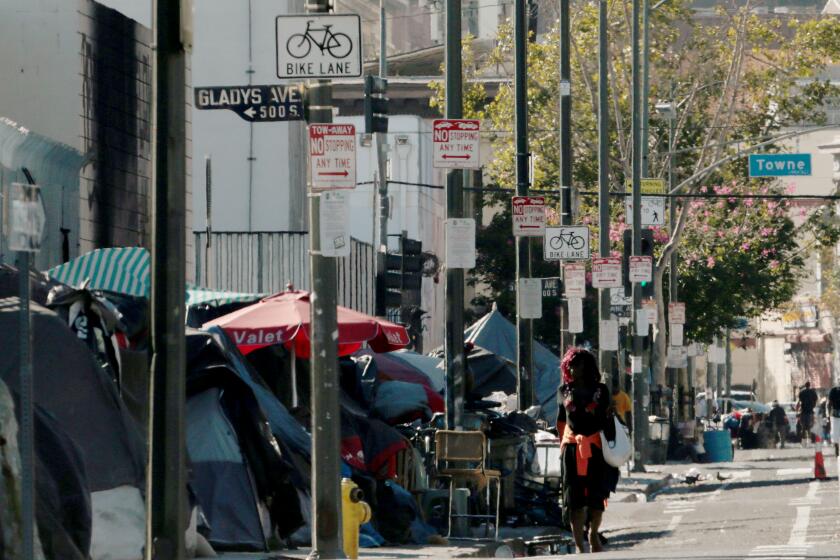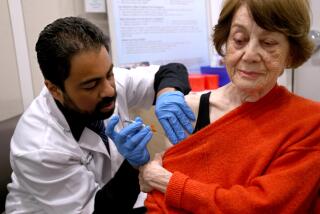Could the coronavirus make for a lighter flu season?
Among the many questions confronting public health experts is one that could determine the next turn of the coronavirus pandemic: What happens when COVID-19 meets influenza?
The coronavirus has already killed more than 170,000 Americans in six months. The flu season, which typically runs from October through April, usually leads to tens of thousands of deaths. If both viruses begin sickening Americans simultaneously, that could create what CDC Director Dr. Robert Redfield recently called “the worst fall from a public health perspective that we’ve ever had.”
But in truth, no one knows what is going to happen as fall approaches. It’s likely that the flu season will become yet another part of life affected by the pandemic in strange and unexpected ways.
Experts say it’s possible that the social distancing measures and widespread closures of businesses in place because of COVID-19 will reduce the spread of the flu so that it’s even less prevalent than in a typical season, as appears to have happened in other countries. But they worry that if restrictions ease, this silver lining may not last.
“If things are moving in the correct direction, then we could have reopening, and that might actually coincide with the middle of the flu season — you could actually have increased transmission from that,” said Dr. Geoffrey Leung, ambulatory medical director at Riverside University Hospital System. “It really behooves us to do as much as possible to prevent any flu cases we can with the traditional tools.”
One reason L.A.’s homeless people have avoided a COVID disaster could be that they live outside
The reopening of schools in particular could be risky. Though children’s susceptibility to serious illness from COVID-19 has seemed relatively low, kids are particularly vulnerable to the flu. The virus runs rampant at schools and then children take it home to their families.
Leung and other experts recommend that people get the flu shot to reduce their chances of falling ill with influenza and to lessen the severity of illness for those who do contract it. They also advise that people stick to the masking and social distancing measures mandated to control COVID-19, because those should also help keep influenza at bay.
“The part that scares me the most is we don’t know what the interaction is if one is co-infected by the flu as well as COVID-19,” said Dr. Alexander Li, deputy chief medical officer for L.A. Care Health Plan, the nation’s largest public health plan. “Having COVID plus flu together is probably bad news.”
A handful of studies from China and the U.S. identified patients with influenza and COVID-19, but with mixed results. Some found that the patients seemed sicker than COVID patients without the flu; some found no difference.
If a patient shows up at a hospital with both infections, doctors may not quickly diagnose both illnesses, since they have virtually identical symptoms. If the condition is spotted, there is little known about how to treat such patients. There are medicines that reduce the severity of a flu infection, and medicines that do the same for COVID-19, but the drugs are different and may not mix well.
When the coronavirus pandemic began earlier this year in the United States, the flu season was tapering off. Flu typically peaks in the U.S. in December and January.
But flu season occurs during the Southern Hemisphere’s winter, which coincides with summer in the Northern Hemisphere. The experience there typically provides an indication of what kind of flu season might be seen in the north starting in the fall.
But in 2020, there have been virtually no cases of the flu in countries such as Australia and Brazil. Experts say that limited air travel and social distancing measures may have reduced the importation of the disease into those countries as well as its spread within.
There’s also some thinking that the coronavirus itself might have kept the flu from gaining a foothold — that only one respiratory virus can dominate at a time. Experts say that phenomenon could theoretically work in both directions, but they wouldn’t count on it.
“Usually when one is there, the other isn’t — at least that’s sort of the dogma,” said Dr. James Cherry, an infectious disease specialist at UCLA. “Conceivably, flu could in some way could dampen the coronavirus, but I think this is August and that’s several months away, so anything about that will be speculation.”
Experts are quick to discourage assumptions that the U.S. will see very little flu just because that was Australia’s experience. Australia has also managed to keep its coronavirus death count very low, while the U.S. has not, they point out.
Cherry also warned that some strains of flu could also be more dangerous than others. Researchers recently reported a strain of flu circulating in pigs that could infect humans and cause a pandemic. That would make matters much more complicated — and deadly.
“I think the important thing is to keep our fingers crossed,” he said.
Even in a normal flu season, many people die from it. In the 2018-19 season, approximately 34,200 people died of influenza in the U.S., three-quarters of whom were older than 65 — an age group also particularly vulnerable to COVID-19, according to the CDC.
To prevent these deaths, experts widely recommended the flu shot, with the best time get it in September and October. Though the flu is most dangerous for children, pregnant women and older adults, the vaccine is recommended to everyone over 6 months of age.
As with COVID-19, stopping young people from falling ill protects others. A young, healthy person who gets the flu shot reduces his own chances of becoming infected, as well as the possibility of spreading the virus to someone who may not recover as quickly.
“Everyone is waiting for a vaccine for COVID, and the thing with influenza is, we do have a vaccine. We have a reliable, effective vaccine,” said Dr. David Bronstein, a pediatric infectious disease specialist with Kaiser Permanente.
In the 2018-19 flu season, the vaccine was considered 29% effective and just under half of the American population received it, according to the CDC.
Those numbers may seem low, but they belie the immunization’s true value, Bronstein said. The shot not only reduces people’s chances of falling sick at all, but also the severity of the illness, so they’re less likely to end up in the hospital.
The first confirmed case of COVID-19 in Los Angeles was a man from Wuhan, China, who was hospitalized in a secret ward in January and remained the sole patient diagnosed with the virus here for five weeks.
The CDC estimates that in the 2018 season, the flu vaccine prevented not only 3,500 deaths, but also 58,000 people from being hospitalized.
If the coronavirus surges this winter, clearing patients out of hospitals could be the difference between life and death, experts say. The flu shot then can be seen as a tool to preserve resources for COVID-19, for which there are fewer treatments and a higher mortality rate, Bronstein said.
“It doesn’t look like COVID is going away anytime soon,” he said.
Many doctors said they were concerned that people may not get their flu shot because they’re worried about visiting clinics or pharmacies due to COVID-19. The COVID-19 pandemic has led to a drop in people seeking routine medical care, including a reduction in scheduled childhood immunizations as parents avoid the doctor’s office.
Ultimately, the flu season may shake out much like the pandemic itself — unevenly. Deaths have been concentrated among people of color as well as those who are lower-income, in part because their jobs tend to make them more exposed to the virus, said UC Riverside epidemiologist Brandon Brown.
When flu season begins, essential workers already exposed to the coronavirus in their workplace will be at risk of contracting two viruses. And people who are able to stay home, who otherwise may have caught the flu, will be less likely like catch the flu and COVID-19.
“It more just irons down the disparities that are here,” Brown said.
More to Read
Sign up for Essential California
The most important California stories and recommendations in your inbox every morning.
You may occasionally receive promotional content from the Los Angeles Times.













